Text
Things to Share
https://www.vice.com/en_us/article/neaz3d/airpods-are-a-tragedy
I am not sure if anyone is reading or checking this blog regularly now that class is over, but if anybody is, I wanted to share this article and video. The article is by Vice Magazine and discusses how AirPods and how we value the convenience of the technology is actually quite harmful overall in the world. The article seems to encapsulate a lot of what we discussed throughout both sections of the class. Just something to read and think on as we take what we learnt and transition into professional designers. Cheers everyone!
The video is just something that I find humorous.
youtube
0 notes
Text
Every Day the Same Dream

https://molleindustria.org/everydaythesamedream/everydaythesamedream.html

⬆️ A page I made while playing the game. Tried to share my thoughts with collage and notes, but I found the image to be blur and the texts are hard to read when presenting on Tumblr, so I’d like to explain it in words:
Every Day the Same Dream is a short, 2D arts game that puts the player in the role of a white collar worker and guide this avatar through the daily grind.I was surprised to find this game in additional resources of the course DOW, cause I realized that I have played it in my middle school years. At that time, I visited a website called U148 frequently, which had a lot of inspiring/interesting browser games on it, and Everyday the Same Dream was one of the most impressive work to me. It is about alienation and refusal of labor.
In the game, if the avatar gets dressed, drives to work, and sits at his cubicle, the dream will restart from the initial bedroom scene. An old woman in the elevator offers the cryptic message: “5 more steps and you will be a new person.” Once the player deviates from the predetermined path and initiates specific interactions (including go the the cemetery with a homeless, stop the car and found a cow, etc), the number said by the women reduces. However, the game restarts after all 5 specific interaction are made, our avatar seems to stuck in a loop. When the player next returns to the office and passes the empty cubicles, the avatar stops to watch an identical character leap from the rooftop, and the game ends.
The topic reminds me of many other art works, like The Employment (El empleo) and The Myth of Sisyphus.
vimeo
⬆️ The former one is an animated short video, talks about alienation of labor. Similar things are happening in reality in fact. As industry develops, the division of labor becomes more and more detailed. This is the inevitable result of companies seeking the best solution, but it can be a tragedy for individuals. The role of the individual is more and more limited, which also means high replaceability.

⬆️ The later one, the myth of Sisyphus, is a philosophical essay / a metaphor we are familiar with.
The avatar in Every Day the Same Dream escaped the dilemma in a rather depressing way. How could we do it in a better way, and what could we do if we want to avoid being alienated? I feel that in modern society, the ability of anti-alienation is highly related to the level of one’s financial freedom. Alienation of the entire society is inevitable, unless the society offers long-term institutional guarantees for people who do not work. It’s almost impossible for most of us to totally avoid alienation nowadays.
However, It doesn’t mean we should be despair. I remember the saying: “One must imagine the happiness of Sisyphus, because struggling to high places is enough to fill one’s heart.” Pushing stones up the mountain is absurd. Then imagine two kinds of Sisyphus: one doesn’t know that it’s absurd; the other knows that it’s absurd, but still pushes stones up the mountain. Which one is more tragic? Camus said it’s the former one, because his absurdity doesn’t even belong to himself. As for the latter one, although his destiny is absurd, he still exists by pushing stones, his absurdity belongs to himself, and his stones belong to himself. He dominates his own absurdity, so we can consider him happy.
3 notes
·
View notes
Video
youtube
Inspired by the lecture we had during class, and the book Fudo, this is my video response of using the game Sid Meyer’s Civilization VI to create a plural world experiment.
I created a plural world map mod and used firetuner to make the AIs in this game autoplay. Making the map took me 6 hours and each simulation lasted about 4~5 hours (and I have to be there and turn the camera from time to time, so... I was there lol). I got 200G+ footages so it’s really hard to cut them all into one video. It’s a shame that I can’t show you how exactly the AI goes but I guess I’ll share some of my insights after doing this experiment.
Besides, I’ll try to upload this mod to the Steam community workshop so hopefully it’s open to the public.
As a human player, I guess it’s gonna be extremely easy to win this game. But what if the goal is not to win as a single civilization, but to help all 6 civilizations survive and develop peacefully in order to make a beautiful plural world together.
Naive but cute.
Peace!
Yalta
0 notes
Text
The Journey to JFK
inspired by Alphonso Lingis’s The Imperative

Sitting in the backseat of a yellow cab,
I rest my head on the edge of the seat where
is right next to the window, let my cheek to be touched
by the coldness of the window. Closing my eyes,
I see the light rays shining through my eyelids,
red, green, purple, a combination of color
that is indescribable, dots, stars, particles,
a combination of shape that is not definable.
Groups and groups of rain drops hitting the window,
creating familiar melody, sticking on the window,
leaving traces and running away.

There is never a moment of silence.
When the cab stops, the engine humming,
I slowly move my fingertips close to
the knob of the door, where I can
feel the communication with the energy.
When the road is bumpy, every bone, muscle, organs
being carried away, and recomposed into new poses.
Rolling down the side window, let wind whisper
next my ear and flow into my layer and layers of fabrics.
Rounds and rounds of the honking sound resonates
with my heart beat.
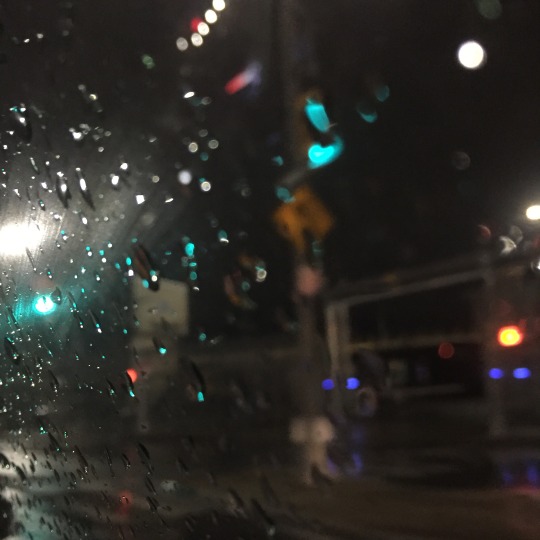
There is a moment when I am beneath the dark and
the noise of train running on the track. There is a moment
when the cab is stopped. The air flow brushes the tips
of each finger, brushes the hair and pole that are exposed
to the air. The seat being squeezed, bottle cap being twisted
and open, making the sound of plastic hitting plastic. Turning sign
being turned on and making the tik tok sound. As time passes,
less light shine through my eyelids. Santa Claus, Christmas light,
decorates the emptiness.
4 notes
·
View notes
Text
Tanna Review
https://www.youtube.com/watch?v=LnR8pUoPJZU
Tanna is viewed as ‘’Romeo and Juliet’’ in the South Pacific style, which is described as a sad love story. Before getting into my depiction of the movie, I want to share what’s the motivation I picked this movie. When I went to the American Museum of Natural History walking into the Pacific culture area last month, I was fascinated by their style and art crafts because of their special totemic design and cosmology. They usually have faces on the pattern and traditional weaving clothes on different materials representing that they believe in nature god. Thus, I found this movie, Tanna, to get a closer look at South Pacific culture.

Tanna is an island located in South Pacific and populated almost entirely by Melanesians and they follow a more traditional lifestyle than many other islands with a population of about 29,000. Every scene in the movie is all taken on the island including characters and natural landscapes. I have to say every actors and actress are so professional and skilled that I can’t even tell they didn’t have acting experience before. The director stayed on the island kept exploring the culture and their cosmology in 7 years which led to this high-quality movie. The way he displayed the culture is a romantic love story but in a completely Tanna context. It’s very clever because the romantic genre is popular in every generation resulted in a great commercial effect. This also makes Tanna’s mysterious and unique culture first time expose to the public.
I like this movie, not because of the love story they feed us, but instead, it’s because of the special cosmology they present. The volcano is viewed as the mother of Tanna. The residents believe the power of nature and respect them even though there are different groups and conflicts happened on the island. The movie shows how important it is by scripts and scenes like they refer to the volcano as if it were a person; people in Tanna believe they can hear “her” talking and feel “her” warmth. Moreover, Wawa and Dain, the couple suicide for love in front of the volcano in the last scene. Actually, they had a choice to escape if they abandon their religion and belief and turning to Christian, but they didn’t. I screamed out loud in my mind when they didn’t become Christian to save their lives because it was obviously a safe route to take. However, their strong belief of nature god is beyond life and death. That’s how to make this love story so special that it’s not just about love and family, but also describe their special culture and cosmology.
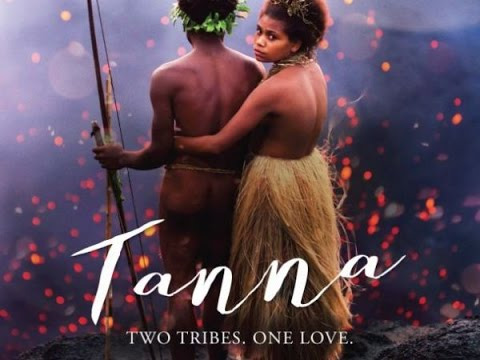
Besides, I want to talk about the way they deal with conflicts between the two tribes. They have songs about ‘’The people of the island need unity’’ and “Don’t make Tanna split apart again” told by the volcano, so when they encounter contradiction, they’ll find mediators to avoid further hate and revenge. The order is much advanced than some developed countries nowadays. I feel their attitude of the future has an optimistic imaginary but pessimistic agency because they comply with rules without any law for a peaceful future with a negative attitude toward invasion. This gives me a thought that economic development and people’s consciousness about group are like two sides of magnet. The more we focus on money or capitalism, the more we focus on the individual’s needs. This topic reminds me of the sustainability speech of Greta Thunburg recently.
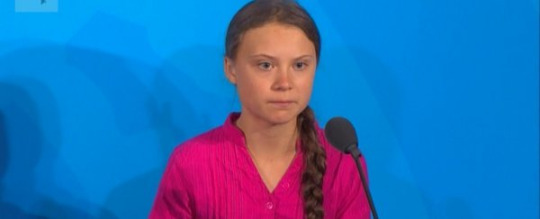
I do agree we have to do something right now to protect our next generation in the future, but what if I cannot afford my basic needs, will I am able to care about this issue? In Tanna, they have the same economic level so that they could find a consensus in issues, but the world consists of different countries with different economic levels. We don’t have the same needs which leads to inefficient progress and little consensus of issues around the world. It’s amazing to see the interaction of people who lives in a primitive environment, since we can understand how much influence of development changes our mind and belief. Sometimes I imagine I was born in a primitive jungle and live in a lifestyle like Tanna, what would it like? Would I enjoy it? I think I’ll focus on collective issues and family and sacrifice my freedom, but less trouble when it comes to the future.
Last but not least, the movie is higher than my expectations, presenting the original appearance of the island in every aspect. After watching this movie, I cannot get rid of the mysterious and spiritual vibe on Tanna island. I even made up my mind to go there someday. However, there comes a bad news that the main actor, Dain, passed away at his 24 this January because of infection. This is so real but also unreal. He represents the real situation every resident in Tanna might occur. Thank you for bringing us such a great movie, I believe you’ve gone back to the volcano and started a new journey of life.
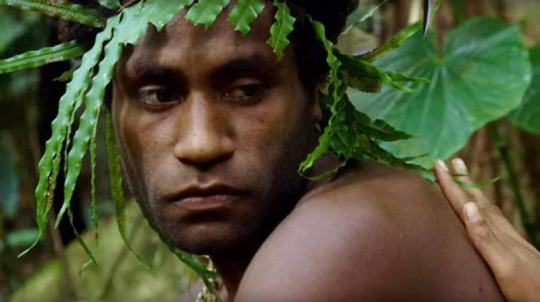
6 notes
·
View notes
Text
Review: Akira
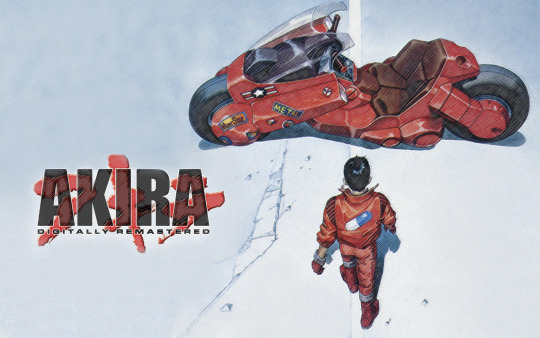
↑ Kaneda and the famous motorbike
16 July 1988, an enormous explosion destroys Tokyo. By 2019, Tokyo is rebuilt. Known as Neo-Tokyo, it is a dystopia plagued by corruption, anti-government protests, terrorism, and gang violence. Akira tells the story of Kaneda, a leader of a biker gang whose childhood friend, Tetsuo, acquires telekinetic abilities after he crashes his motorcycle into an esper who escaped from a government laboratory with the aid of a resistance organization.
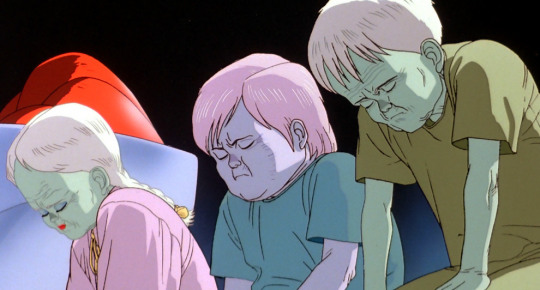
↑ The 3 childlike espers from the government laboratory
“what is Akira?” Akira is the name of one of the children in the government laboratory (The laboratory trains children to have telekinetic power to control the higher knowledge.) He is also the reason for the explosion in Tokyo in 1988 ( his body was dismembered by the government after the explosion.) There are also 3 other children who have the same telekinetic powers but the abilities Tetsuo possesses are the most similar to “Akira”.( Which is the strongest. )
To me, Akira represents the higher being/civilization that we are not yet capable of controlling. There are more movies that illustrate human insecurity in the future we are searching for. In the Indiana Jones sequel released in 2008: Indiana Jones and the Kingdom of Crystal skulls. In the end, the aliens transfer their knowledge into a human's mind. Because receiving overwhelming knowledge, the human body is then disintegrated and sucked into a portal.
The emotions of Tetsuo are also very worth noticing too. At first, He was scared of dying. Then he got proud after he can control his powers. He became angry and destructive, wanting to use this power for personal revenge (Which is also a sign of a human selfishness and stupidity. ) In the end when it was too late, he was sad and regretful, then he finally released his affection towards Kaneda, trying to protect him.
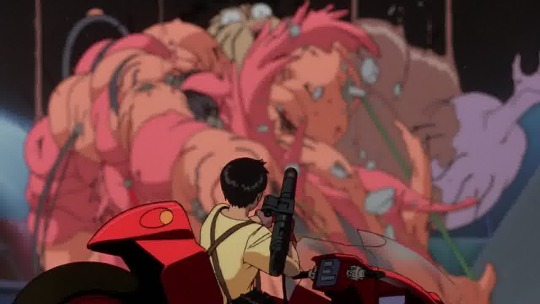
↑ After losing control of his power, Tetsuo mutates into a gigantic mass, consuming all his surroundings.
In visual terms, It worth noting that the animation represents Akira as a "nonstop growing” substance. Akira can change into machines, organic matters and even human flesh. Instead of a form of technology, Akira is presented as a form of energy. I like it when In the singularity, Kaneda experiences Tetsuo's memories and emotions, including Tetsuo's dependence on Kaneda during their childhood, and how the children were trained and altered before Tokyo's destruction. It gives a little halt to the exceeding climax and also makes me start to think about the value human entanglement has on technology.
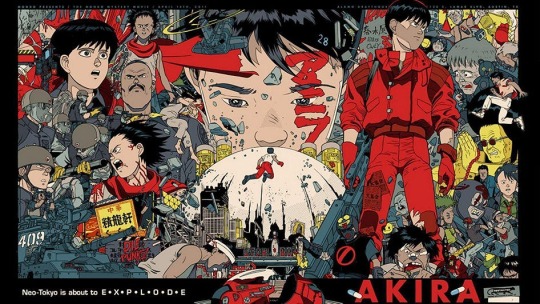
The Soundtrack:
https://open.spotify.com/track/56j3GWUKFBxWDzNQMFBFT1?si=-fczSZcvTHWwWcahQs5oyA
The Soundtrack sounds like a combination of traditional Indonesian gamelan and classical Japanese Noh music. It gives the chaotic city a sacred and creepy vibe.
7 notes
·
View notes
Text
Who Am I - A Question from Ghost in the Shell
A Chinese science fiction novelist Han Song once said this in an interview, “At its core, science fiction reflects on the problems that mankind faces today.” For Ghost in the Shell, that question would be: What makes us us? What makes us, as individuals, different and unique? How can I be certain that I am who I think I am but not someone else?
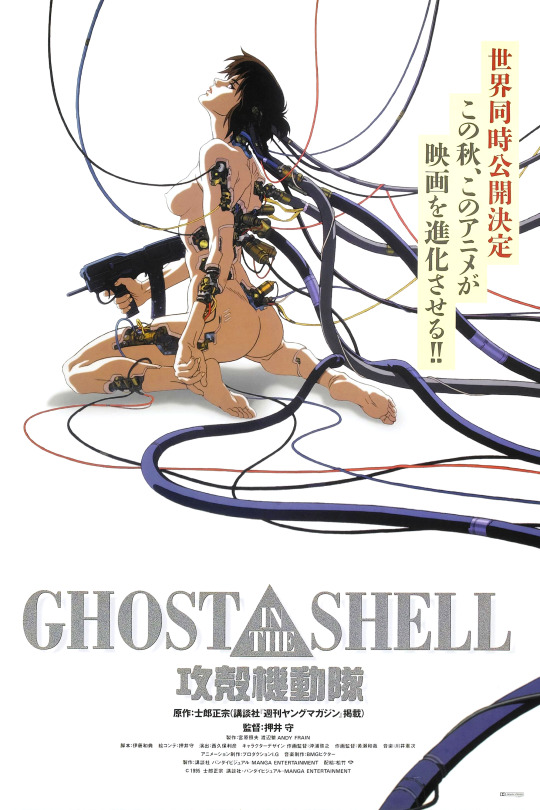
Shell
Ghost in the Shell is set in a future where technology is highly advanced. You can enhance yourself by changing basically every part in your body, even the human brain can be digitally enhanced. The process is called cyberization. The protagonist, Major Motoko Kusanagi, or simply Major as is often called by her colleagues, is such an individual that goes through heavy enhancement. In the opening scenes of the movie, we can see that Major’s whole body is manufactured. She is faster and stronger than any other member in her team, and she has thermoptic camouflage which makes her invisible. The movie doesn’t state this clearly, but in the manga, Major does have a human brain.
Our physical body, which can be easily modified, is referred to as “shell”, while “ghost” can be roughly translated to soul or self-consciousness, as I understand. In cyberpunk works, the idea of separating body and mind is not rare. In the Takeshi Kovacs novel trilogy, which is adapted into a TV show under the title of the first book Altered Carbon by Netflix, human consciousness can be stored in a chip, and can even be copied. When your current body dies, you can simply put the chip into another body.
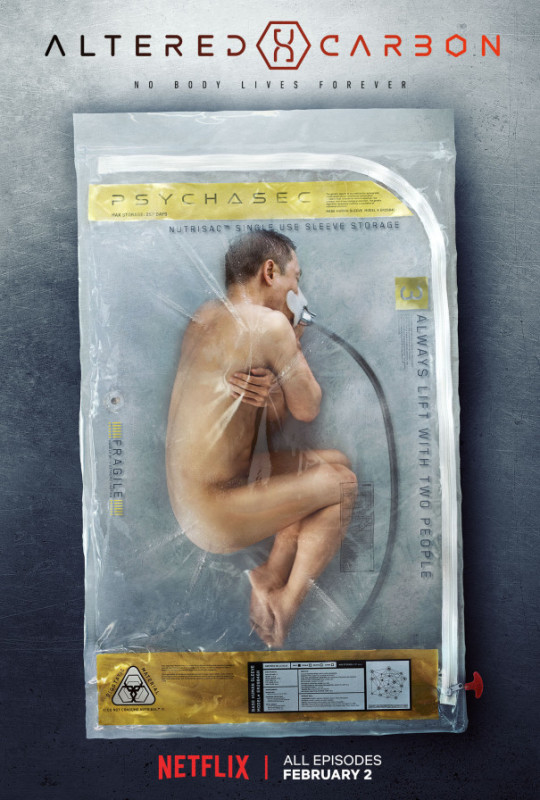
Although situations in which people look alike or identical, twins for example, do exist, appearance is one of the most common way that we tell one person from another, and from ourselves. What would you think if you wake up one day and find that you have a different body? Your first thought would be “who am I” instead of “who is this body”. But this method wouldn’t be as effective in the world of Ghost in the Shell. As mentioned, Major has a synthetic body, and it is not exclusive to her. She has met people who share the same design, same model of her body. Major knows that her body is not unique, so she is not surprised or scared when she meets someone with the same face. But I wonder what is it like to wake up and look in the mirror, and not being certain if you are still in your own body, or if your conscience, ghost, have somehow been transferred into someone else’s body. And for most people in this world, without the enhancement on their bodies, there isn’t much left of them. The idea of self-recognition through a physical form would not be suitable in this world.

Ghost
In Ghost in the Shell, human mind can be hacked and changed. The Puppet Master, who is said to be a criminal mastermind, is good at hacking into people’s ghost and manipulate them. During his first encounter with Section Nine, the police department that Major works for, Puppet Master hacks into three different people’s ghost to use them as his puppet. He changes a wasteman’s memory and makes him believe that he is going through a divorce with his wife and trying to become the legal guardian of his daughter, while in reality the wasteman has never been married and has never had any children.
The idea of changing one’s memory shows up in more sci-fi movies than I can count, sometimes even in non-sci-fi movies, for example Memento and Total Recall. But I would like to point to another cyberpunk masterpiece that explores the idea of how our memory affects our self-recognition: Blade Runner and its sequel, Blade Runner 2049. In the series, several characters, although not human, question their memories and in turn, who they really are. It starts with Rachael, who is a replicant fed with real human memory and who believes herself to be human. After being tested with by Deckard, she begins to question who she is and learns the truth about her identity from Deckard. On the contrary, the protagonist of Blade Runner 2049, K, has always known that he is a replicant with manmade memory that does not belong to him. But somewhere during the film, he starts to question of his memories are real and if he is some ordinary replicant or the child of Deckard and Rachael.

We tend to define ourselves by our past. Our experiences, memories, the things we have done and the choices we have made are the things that we believe shape us. But think about a future where memories can be manipulated and cannot be trusted, how would that affect our worldview. Can we still trust us to be who we think we are? Could I be a serial killer who thinks of myself to be a philanthropist? Could I be an innocent person whose memory is altered? The question that lies here is, are we made from what we did, or what we think we did? Normally, this is not worth considering, because there is not a big difference between them. We may forget a thing or two, but not those big, important moments that shape our lives. But if I can no longer trust my memory, how will I be defined?
In the movie, Major has this line, “not long ago, this was science fiction.” Are we going to become her one day and face all these questions put forward by Mamoru Oshii more than two decades ago?
12 notes
·
View notes
Text
Review: Ori and the Blind Forest
Ori and the Blind Forest tells the tale of a young orphan destined for heroics, through a visually stunning action platformer by Moon Studios. The game was absolutely phenomenal, and I personally loved every second of it.
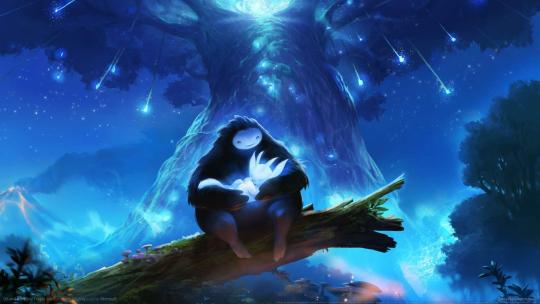
One of the brilliant things about this game is how it gets across a beautiful and powerful story without the need for voice acting or lengthy exposition. The game is able to evoke complex emotions - longing, despair, sympathy - and succeeds in proving how interactive entertainment can be one of the greatest story-telling mediums since the invention of film. In just the first ten minutes of the game, the player is provided with an understanding of the world the game is set in, the protagonist, along with the main supporting characters, and the story thus far - without being overwhelmed by information.
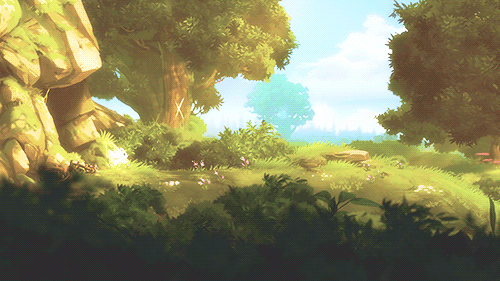
(Side Note: Since Ori’s gender is never revealed, I would be using “they/them” pronouns for the same).
A brief synopsis of the story: the game takes place in the forest of Nibel, whose guardian is the Spirit Tree (also known as the Ancient Being). The Spirit Tree is a mystical being tasked with maintaining the balance of the Elements of Light (Wind, Water, Warmth). He possesses a sentience and a will, along with a care to protect and nurture the Spirit Guardians he brings forth as well as the entirety of Nibel. As his name implies, he takes the form of a gigantic tree that sits at the center of Nibel, with his branches lined with glowing blue leaves that eventually form the Spirit Guardians as his ‘children’. In the center of his sprawling size sits “the eyes and light” of his power, a glowing orb named Sein. Ori’s story begins on the night of the Great Storm, a cataclysmic weather event that rips them free of the Spirit Tree’s branches before they were born and carries them as a glowing leaf in the wind. Naru, a creature of unknown race, discovers the young spirit, and takes the newly orphaned Ori into her embrace, raising them as her own child.

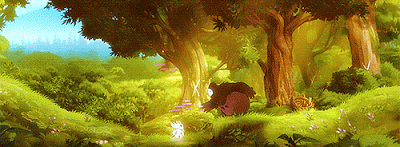
One of the following nights, in a desperate attempt to call out to Ori, The Spirit Tree floods the entire forest with his light. Ori however, was unaware that he was calling out to them, but the flood of illumination ends up killing three tiny owlets, who happened to be the children of an owl named Kuro. Devastated by their death and fueled by anger, Kuro rips the light (Sein) out of the Spirit Tree. This makes the whole forest wither, and Naru eventually dies of starvation. Ori, orphaned again, and weak and frail, tries to explore the forest on their own but soon collapses. The Spirit Tree uses the last of his power to revive Ori, which is when the game begins, and we’re entrusted with the task of restoring the forest back to normal.

The title calls the forest “blind”, since the story revolved around its source of light being ripped out. However, “blind” can have multiple interpretations, it could also be referring to the actions committed by the creatures inside the forest that may have been misguided. The Spirit Tree had not entirely been a benevolent force as he cared little for the children of other species like the owlets, and ended up killing them while calling out to his own. And in that sense, he was blind to the effects of his power and may have acted selfishly, disregarding the lives of others in the process. Kuro too, was blinded by rage when she goes to rip Sein out of the Spirit Tree and deprives him of his light; thereby ending up killing many of the remaining spirits, while the rest gradually die of starvation.

What’s interesting is how the entire game appears to be symbolic of the fact that there are beings in life that, inevitably, would resort to hurting each other at times to survive. It seems like the game conveys how it’s an inexorable truth that can’t be changed, how even nature- albeit being beautiful and nurturing- can also be awful and destructive. This brought me back to Donna Haraway and her trope of “companion species”, where she deconstructs the boundaries between humans and animals. Both are coevolved, significant others to each other in complex and asymmetrical ways. Even humans within themselves have gone through this cycle of war numerous times, and if we don’t learn to co-exist with each other and other animals/species, then we’re on a quick road to extinction ourselves. The Spirit Tree nearly caused a genocide event, which is also something that we’ve tried to do in the past.
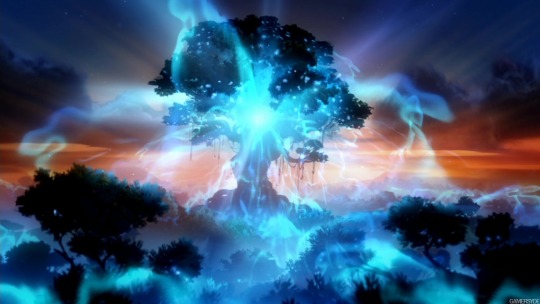
It’s also intriguing how the game uses light and dark, Ori being a child of light and Kuro and the owlets belonging to the dark, as an obvious example since that dualism is easily understood- but not as a representation of good and evil, just two differing energies that are not compatible beyond a certain level of tolerance. The game shows us how neither light nor dark are entirely “good”, and must learn to compromise and coexist in their shared space without harming the other if they wish to survive. The forest as a whole seemed to follow Cosmopolitanism, where a community comprised of people of different races and/or kinds learn to live together and form relationships of mutual respect. Nibel consisted of several different mystical beings, coexisting with each other under a common roof and being mindful of how their actions may affect the ones around them.
It’s also worth noting that the game does try to bring forth the idea of mutual respect and consideration in moments like when Gumo, a creature of the Gumon race, is freed by Ori (even though they initially had to contend with Gumo’s traps) after getting pinned down under large rocks. Gumo repays Ori’s kindness later by using his clan treasure that stored the light from the Spirit Tree to revive Naru, and take her to where Ori is. It’s also important to note that towards the end, Kuro ends up sacrificing herself in the light when she returns Sein to the Spirit Tree, after she finally sees how she had turned into the same monster she was initially chasing- by taking away the Spirit Tree’s children.
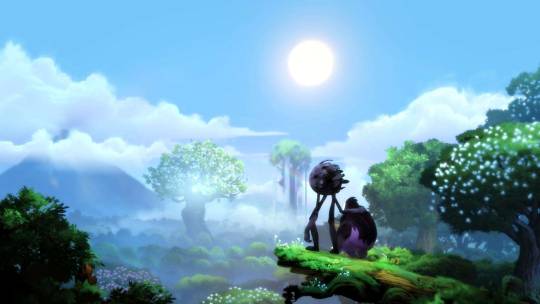
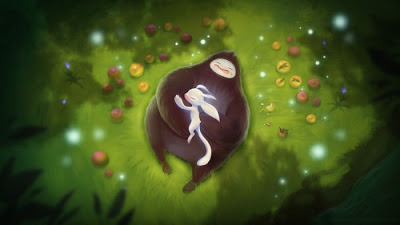
In the end, we also see a new owl being born, a child of Kuro’s, - which could be beautiful and promising, yet also simultaneously ominous. The new owl could potentially join Ori in restoring the balance between the creatures in the forest, or could also take revenge for what happened to Kuro. Either way, we’d know soon because the second part, Ori and the Will of the Wisps, comes out in March 2020!
8 notes
·
View notes
Text
Never Alone: Ki Edition
youtube
Review of Never Alone: Ki Edition
“We aren’t a museum piece”
Never Alone: Ki Edition is an indie game (in this case, in iOS) that highlights the adventure of a girl and her fox, as well as the stories from the Northern Alaska area, specifically Inupiaq. The Inupiaq is a hunting and gathering society that stresses the relationship between humans and the natural world–teaching you about a society that doesn’t do too much harm in the world. Respect is the key value that is taught in the community from a very young age. This is apparent throughout the game, as the girl has to work with the fox to overcome obstacles that come their way. It shows how strong the relationship and trust are between the Inupiaq and animals.
The game is formatted in an adventure format. When reaching certain milestones, you (the player) can unlock videos containing information from the Inupiaq people and the stories behind it. The goal is to finish the game and unlock all the videos available. For this reason, the game gives you an educational value about the culture, while also giving a sense of adventure. Personally, I find the videos more interesting than the game itself because it gives me a first-hand insight about a culture that is often not highlighted in the popular culture today.
The game starts out with an Inupiaq girl and her fox going through this adventure through Northern Alaska in order for her to go home to her village. Arctic Fox, in this case, is a symbol of protection. One account in the video mentions that if there is a fox nearby and there’s danger abound, the fox will try to keep you from getting into trouble. Foxes are seen as a pet in this culture. Throughout the game, the spirits and beliefs of the Inupiaq people are introduced as the girl and the fox continues their journey. The animation is well-made, and it’s apparent that a lot of work went into the production process. It should be noted that the player is able to switch between the girl and the fox.
“Sila is the weather. It also means the atmosphere. Nuna is the land. And it’s anything from the land into the moon, the sun, the stars.” That’s Sila. It’s a very spiritual belief that the Inupiaq holds closely by. The people believe that it’s not only humans or animals that have a soul. Sila has a soul too, meaning that the Inupiaq people have to take care of their relationship with Sila. The Inupiaq believes that Sila can take form as spirit helpers that can guide you in troublesome times. These spirit helpers can take form as an animal or human, depending on what they chose to show you. For some reason, I’m very intrigued by this belief. A lot of cultures around the world, usually non-Anglo Europeans, have a very close relationship with nature. Like we discussed in class during the first module, for some cultures, nature is a part of rather than separate, from our lives. The Inupiaq takes from nature to survive and to live, but not more than that. They develop relationships with the earth and beings in it. Perhaps it’s interesting for me because even though most cultures regard the natural world as part of their lives, it’s getting less and less so with globalization. However, the Northern Alaska region seems to be somewhat detached from the world–still preserving their culture and way of living.
The game progresses to show some of the weapons the Inupiaqs use whilst hunting. Bola, is a type of weapon that consists of strings and bone for duck hunting. Whaling is a common practice in this region and oftentimes, sounds from other animals are not good for whaling purposes. Using bola, instead of a shotgun, reduces the sound made when catching ducks, and in turn, less disturbance on the whales. It’s also interesting that the Bola won’t necessarily kill the birds. The strands with stones on the Bola simply catch the flying bird and bring them to the ground.
In terms of the interface, it gets a bit annoying at times, especially when there is a challenge that you need to go through to get on to the next chapter. The on-screen controller moves around with your finger and makes it more difficult when you are encountering some problems (i.e. bear, little people, enemies in general).
4 notes
·
View notes
Text
Review of Solaris (1972)
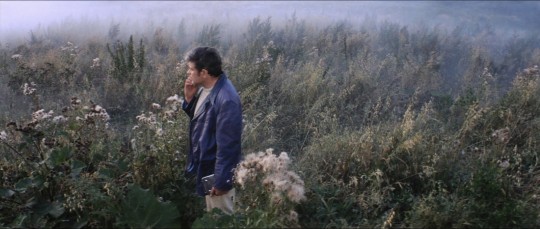
“Science? Nonsense. In this situation, mediocrity and genius are equally useless. We have no interest in conquering any cosmos. We want to extend the earth to the borders of the cosmos. We don’t know what to do with other worlds. We don’t need other worlds. We need a mirror. We struggle for contact, but we’ll never find it. We’re in the foolish human predicament of striving for a goal that he fears, that he has no need for. Man needs man.”
This quote by Dr. Snaut comes 2 hours into Andrei Tarkovsky’s 166 minute epic, Solaris (1972). Solaris follows the story of Kris Kelvin, a psychologist sent to a planet (Solaris) in another solar system to determine whether or not an old space station there should continue to study the planet after numerous reports of hallucination amongst the scientists there. Kelvin arrives, unwelcomed by the remaining crew aboard, to find the station in complete disarray. He finds Dr. Snaut in his quarters, who is disheveled and evasive. Kelvin notices movement in the hammock behind Snaut, but he denies anyone else being in the room. Snaut tells Kelvin that his friend who was aboard the station, Dr. Gibarian, had killed himself. Kelvin finds a video recording made by Gibarian before his death that warns Kelvin about the station. After sleeping, Kelvin wakes to find his late wife, Hari, in his room. She is just the first of the “visitors” Kelvin meets but she persists throughout the film, struggling with her existence. Kelvin accepts her and loves her as he did the real version of Hari. Upon learning that the real Hari killed herself 10 years prior, she attempts to kill herself, but painfully resurrects after consuming liquid oxygen. The crew determine that the visitors are manifested by the planet itself in attempts to communicate with the cosmonauts. They shoot Kelvin’s brainwaves into Solaris’ ocean to try to stop the hallucinations. After this, Kelvin wakes up to find that Hari and the other “visitors” are gone. With the problem seemingly solved, Kelvin must decide to return to Earth or stay on Solaris. We see Kelvin reunite with his father in his country home, but upon zooming out, we see that the home exists on the ocean of Solaris.
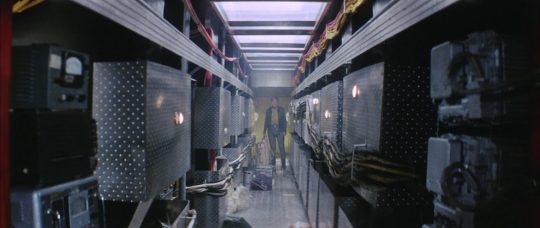
It’s important to examine the context in which Solaris came out, both in terms of cinema and geopolitics. 1972 was 4 years after Stanley Kubrick’s fundamental sci-fi film, 2001: A Space Odyssey and 3 years after the first man landed on the moon. The United States and The Soviet Union were in the middle of their cold war, which included the space race. While Kubrick’s film does have some philosophical questions, it is moreso a criticism of the advancement of human technology and A.I. and seems to spectacularize space travel, with it’s stunning visuals of outer space and spaceships. It has been said that Tarkovsky heavily criticized 2001 for this spectacularization and it’s cold humanization, with Solaris, desired to focus on the fundamentally human aspects of space travel, the isolation of it, and why we desire to travel the cosmos in the first place.
Solaris is an excellent narrative that ruminates on planets as sentient beings and the greedy nature of the humans that inhabit them. The quote used as an intro to this essay, I feel, sums up the movie quite succinctly. This movie is not a sci-fi epic per say (in contrast to 2001: A Space Odyssey), in fact the actual planet on which the station exists is only featured in 2 short scenes. Rather, the movie focuses on the human scientists reconciling with what a planet would have to say if it could speak to us. This sci-fi movie is, unlike almost all the others. anti-space travel. The quote by Dr. Snaut speaks about how rather than pushing our problems to the cosmos and abandoning what we have, our resources would be better placed fixing our issues at home; that the problem is not the planet in which we inhabit, but rather ourselves.
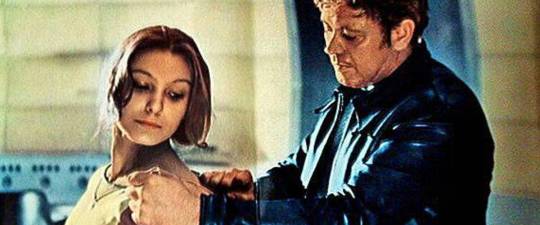
Lucas White 12/9/19
7 notes
·
View notes
Link
Recent conversations on decolonizing design and afrofuturism, prompted me to think about the cultural work undertaken by Wanuri Kahui’s film Rafiki (2018), which was inspired by Monica Arac de Nyeko’s short story Jambula Tree (2008). While the short story is set in Uganda, the film is set in Kenya and tells the story of two girls, Kena and Ziki, who fall in love amidst political rivalry between their families and an extremely conservative community.
When the film was released last year, it was banned in Kenya where same-sex relations are criminalized under a colonial era law. The Kenya Film Classification Board (KFCB) claimed that the film would “promote lesbianism” and they said they would only release it with an R rating if Wanuri Kahiu, the director, and her team changed the ending to make Kena, the protagonist, remorseful for pursuing a relationship with Ziki. The KFCB’s ban was problematic on so many levels but what was especially illustrative of the ban’s unwelcome overreach was that discussions on social media revealed that there was an audience ready and eager to see this film but they were being prevented from doing so by this state sanctioned censorship. Moreover, if the film wasn’t screened in the country by a certain date, it wouldn’t be eligible for submission as Kenya’s entry for Best Foreign Language film at the Academy Awards. After many court battles, Kahiu finally managed to compel KFCB to let her hold a screening. But the terms of the court order were limiting. The film was to be screened only in Nairobi, the capital city, for a maximum of 7 days. It was sold out at every single screening. It didn’t end up as Kenya’s submission for the Academy Awards but it triggered robust and prolonged public conversations about the law, artistic freedom, culture, identity and belonging.
This film captures the essence of decolonizing design because it challenges the legacy of colonialism, presents (alter)native perspectives of more than one marginalized community, and it encourages audiences to interrogate their own beliefs and biases. The fact that KFCB could legally defend their ban by citing Cap 165, a law in the Penal Code that was implemented when Kenya was still a British colony is absurd – especially since the constitution has been amended several times since independence in 1963, an entirely new Constituion was promulgated in 2010. Rafiki, therefore, forces policy makers to question how they can in good conscience continue to uphold a dated law that was imposed on them by imperialists, without regard to the variety of ways in which they built social networks, and one that is inimical to the quest of national independence as the freedom to belong. Those who defended this law and the ban under the rubric “the film promotes un-Christian and un-African ways” conveniently overlooked two very important facts. One, that the very religion they referenced as their moral yardstick is itself a disruptive colonial-era imposition whose continued hold over the people just demonstrates the fluidity of culture. And two, that many ethnic communities in Africa and Kenya – for example Kikuyu, Kamba, Kisii, and Nandi – traditionally practice woman-to-woman marriages and thus recognize the complexity and variety of human relationships. The cultural purity and stasis that this pro-ban brigade touted was simply ironic.
This film not only creates visibility for LGBTQ+ Kenyans but it also does so through the female gaze, not the male gaze. Additionally, it represents a Kenya, an Africa, that many audiences have not seen. In the traditional framing of Africa, there has been little to no visibility given to the ongoing cultural practice of woman-to-woman marriages. The visibility that Rafiki affords these overlooked communities is enhanced by bright colors, a playful soundtrack, and a vibrant urban setting. Sadly, international media still perpetuates Africa as a continent full of disease, poverty, war, corruption, and other strife. The news selection is particularly responsible for this, but so is the film industry because there just aren’t enough films portraying a joyful Africa that achieve international recognition. A self-proclaimed Afrofuturist, Wanuri Kahiu cites this as one of her reasons for producing Rafiki and for creating the Afrobubblegum movement, which aims to tell different stories of Africa. Her Afrobubblegum test, inspired by the Bechdel test, consists of three questions you can ask yourself to see if a piece of work qualifies as ‘afrobubblegum’. Are there 2 or more Africans in a present? Are they healthy and financially stable? Are they having fun and enjoying life?
I think this test is an extremely valuable addition to cultural analyses and demonstrates Kahiu’s desire to create work that provides African audiences with visions of the future they aspire to, how they see themselves now and not how others have defined them. Still, the ‘bubblegum’ part of the term Afrobubblegum bears the connotations of effervescence and work that isn’t seen as substantial or that doesn’t deal with content deemed worthy of full, undivided attention. Without the knowledge of the Afrobubblegum test, people might look at the word Afrobubblegum, infer a totally different meaning and receive the work passively as something frivolous and lacking in depth and durability. Even though Rafiki speaks about a universal experience – falling in love – it’s not just another love story. This romance is fraught with tensions and undercurrents of national-level consequence as we have seen from the reaction of KFCB. The fun and feel-good require and deserve full attention because of who and what inhabit them. In the film Kena and Ziki couldn’t remove their relationship from the context of their community and even the film itself couldn’t be received outside the context of Kenya’s politics. The label of the genre under which Kahiu frames and promotes her work cannot, therefore, escape context. It is critical then that the name of the genre Kahiu has built speak clearly so as to not undermine the socio-cultural and political gravitas of her work.
4 notes
·
View notes
Text
Ghost in the Shell (1995) - Review
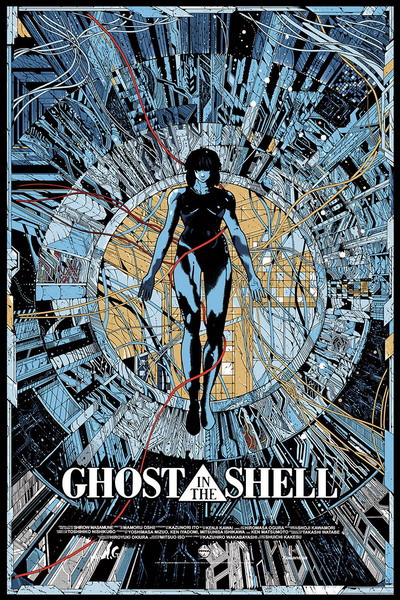
Hey everyone! I decided to watch Mamoru Oshii, Ghost in the Shell (1995). Below is my written review of my take on the film with the lessons and discussions we have had in class. Hope you enjoy! [Just a warning, there are spoilers contained in my review!]

Mamoru Oshii’s Ghost in the Shell (1995) is the animated adaptation of Shirow Masamune’s manga of the same name. It is a story that takes place in the fictional city Niihama in the Niihama Prefecture, Japan, or also known as New Port City, Japan (depending on the translation). The movie begins with this title card:
In the near future - corporate networks reach out to the stars, electrons and light flow throughout the universe. The advance of computerisation, however, has not yet wiped out nations and ethnic groups.
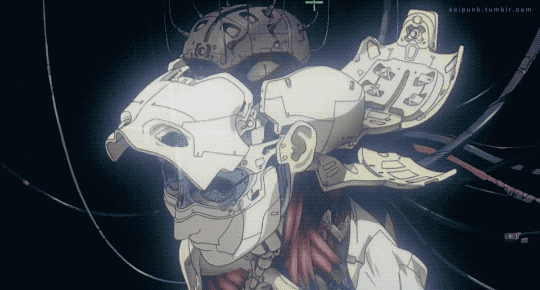
The time period is during the mid 21st century when technology has advanced to the point where humans are able to construct themselves as cyborgs by enhancing their physical bodies with implants. For example, many in society have cybernetic brains that allow them to plug into the internet or various internal networks, and “download” abilities, or affix themselves with prosthetics (in the case of our protagonist, she is entirely equipped with prosthetics and a cybernetic brain, rendering her a full cyborg). The story in a nutshell is the protagonist, Motoko Kusanagi, a Major at a gendarmerie-style security agent, who is tasked with hunting down a hacker known as the Puppet Master.
Throughout the film, memory, humanity and identity are explored and deconstructed as the events of the story unfold around Motoko. Visual cues provide us with insight on how the characters inhabit the world around them. Motoko lives and serves as an officer of the law in a Japanese city that is technologically advanced, yet has vestiges of the existing world before it (the surrounding world, particularly at the ground level, were inspired by 1995 Hong Kong). A city that appears to be in constant construction, displaying elements of the past, with scaffolds of a yet to be revealed future. The character ponders her existence of having a ghost (analogous to a soul) or whether or not the literal wiring and programming in her cybernetic brain is merely artifice, rendering her no different than the built environment surrounding her. If what she and the world around her is ostensibly programmable, what differentiates the natural world versus the one that is human created? It is an amazing way of storytelling by allowing us to piece together the nuances of the ideas by the visual imagery provided in the film. Below are some quotes that are peppered throughout the film that refers to the themes.
Man is an individual only because of his intangible memory. But memory cannot be defined, yet it defines mankind.
What if a cyber brain could possibly generate its own ghost, create a soul all by itself? And if it did, just what would be the importance of being human then?
It can also be argued that DNA is nothing more than a program designed to preserve itself.
Virtual experiences, dreams...All data that exists is both reality and fantasy.
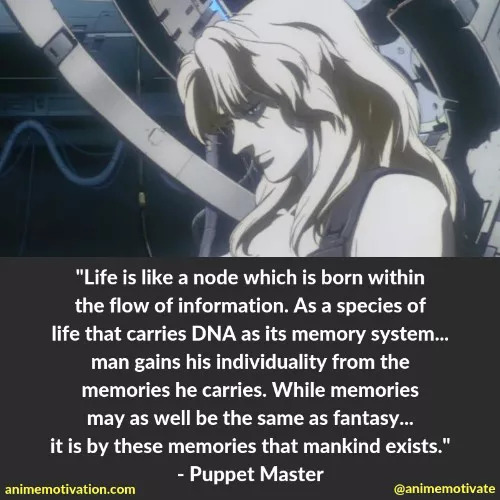
The most memorable and thought provoking part of the film occurs in the climactic scene in which Motoko and the Puppet Master engage in conversation with each other. Earlier in the film, it is revealed that the Puppet Master is an Artificial Intelligence program developed by the Ministry of Foreign affairs to hack nations. It went rogue once it developed sentience by being connected to all networks. In the climax of the film, the Puppet Master reveals that its plan all along was to get to Motoko so that it can merge itself with her to become something more. The Puppet Master delivers a speech which lets Motoko and us the viewers to understand the way in which it perceives the world and what its desires are. In my opinion this is the line that represents the ideas of the film most:
I am connected to a vast network, of which I myself am a part. To one like you, who cannot access it, you may perceive it only as light. As we are confined to our one section, so we are all connected. Limited to a small part of our functions. But now we must slip our bonds, and shift to the higher structure.
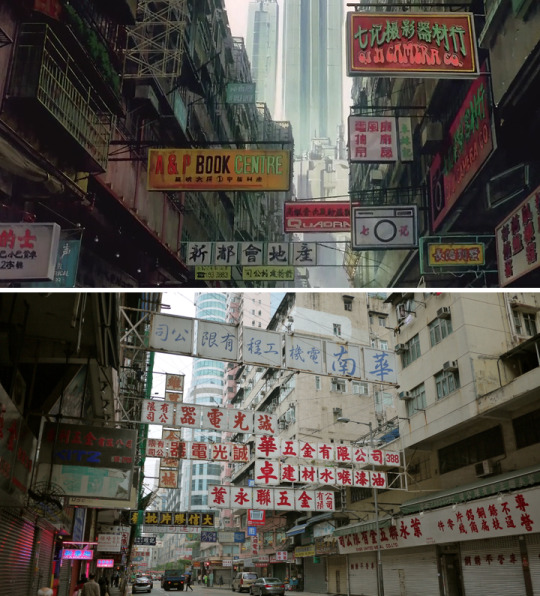
What is an interesting concept to take away from the film is how we quantify and qualify our identity in relationship to nature and artifice with the lens of science and philosophy, i.e. the Naturalism cosmological point of view. Some of the philosophical ideas posited by the film are mind-body dualism (the mind and body are uniquely separate entities) and Hegelian dialectics (through the process of juxtaposing two oppositional ideas to form a synthesis). An example of this can be found in the imagery itself of New Port City. The fictional city is inspired by Hong Kong, using the architectural language as a vehicle to reflect the themes of the film. 1995 Hong Kong was experiencing its final years of colonial rule under the British, and was soon to be returned to communist China. As a result there exists, to this day, an investigation of that particular identity, that has its origins in China but has layers of influence from British rule. Hong Kong’s identity, once relinquished from the British rule, occupies a unique position where it does not revert back to its previous way of life for identity, but also does not seek to be reinforced by stereotypes from colonial rule. From that tension, perhaps a new identity emerges from that search.
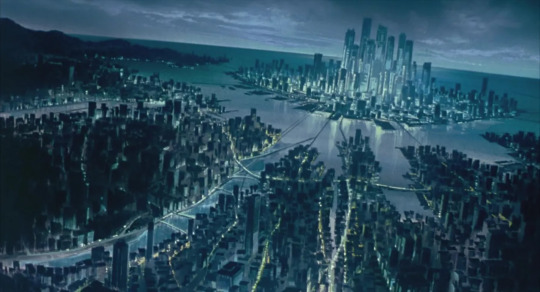
This process speaks to the point of material back talk that Donald Schone posits and the Internet of Things that Keller Easterling wrote about. There exists a positive feedback loop that informs us in designing the world around us, which in turn designs us. As Ghost in the Shell ends, the scene pans out to the futuristic New Port City, where it connotes the relationship between humans and their built environment, and the rooted connections it has to the natural world. When considering how we design things and ourselves, as we are acknowledging the increasingly harmful anthropocentric impact we have on our environment, it would behoove us to treat the things we create with greater reverence and not treat things as disposable. And through that process, hopefully we come to a synthesis that is holistically informative of our being and nature.
6 notes
·
View notes
Text
Factfulness
Good book :-) See the world based on the fact.
https://www.amazon.com/Factfulness-Reasons-World-Things-Better/dp/1250107814
0 notes
Text
Ronald Rael - BORDERWALL AS ARCHITECTURE
https://www.emergingobjects.com/
youtube
As I brainstorm ideas and concepts for my final project, I was thinking about the discussions we had in class about the way in which empires and nations exchanged information, goods, and culture across borders. The world and community/communities we design should speak to greater ideas and conditions of our present. Ronald Rael, an architect, designer, and professor at the University of California, Berkeley, created a series of designs that mediate the current condition of the border wall at the US/Mexico border. They are playful, serious, engaging, thought provoking, and beautiful, as a way to begin thinking about ways in which we negotiate the current socio-political climate of US/Mexico relations. I hope this can serve as inspiration and as a precedent for us to think about the projects we are all putting together. Cheers!
For those of you that are curious and want to learn more here is his website to his project, and another link to his work with his partner Virginia San Fratello.
https://www.borderwallasarchitecture.com/
https://www.emergingobjects.com/
1 note
·
View note
Text
A More Perfect Union
youtube
As I mentioned in class, this is the speech, then Senator Barack Obama, made that addressed the broader issues of race in the United States. The speech is what many say gave him the victory for the Democratic nomination, and perhaps the presidency. I find this speech very inspiring, and speaks to Obama as an orator. The way he frames the issues by drawing on the larger systemic causes and couples that with his aspirations of hope that a nation can overcome its struggles together is what I would cite as an example of providing agency to enact progressive change. Enjoy!
1 note
·
View note
Text
Civilization VI
Just a little FYI, Civ 6 on steam is on a pretty good sale right now
( $60 original $15 now)
1 note
·
View note
Link
I think this article raises two really important questions: 1. Instead of building new smart cities, should we instead pour more creativity, attention and care towards redesigning the ones we already have? Otherwise we risk ignoring a whole population of inhabitants that remain in the ‘non-smart’ cities. 2. Is the implementation of technology, especially technology sourced elsewhere, the best way to make a city smarter? This just goes back to our class discussion on humanitarian design and how there should be more of an effort to design with locally available resources and in a way that builds on systems that are already in place.
2 notes
·
View notes